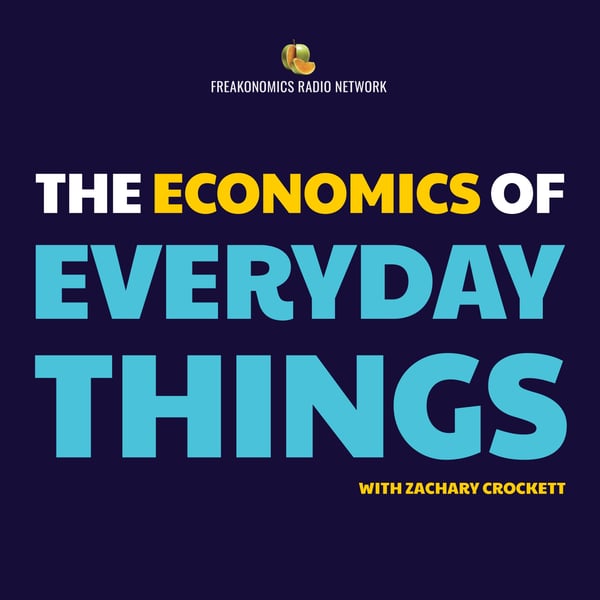6. T. rex Skeletons
The Economics of Everyday Things
Freakonomics Network
4.8 • 1.2K Ratings
🗓️ 19 June 2023
⏱️ 18 minutes
🧾️ Download transcript
Summary
Transcript
Click on a timestamp to play from that location
| 0:00.0 | In October of 2020, there was a hotly anticipated auction at Christie's in New York City. |
| 0:10.0 | It included paintings from some of history's most venerated artists, Picasso, Rothko, Saizan. |
| 0:17.5 | But the lot that fetched the highest price was not a painting. |
| 0:21.5 | Lot number 59. |
| 0:23.2 | Really? |
| 0:23.9 | 27. |
| 0:25.1 | Yes really. |
| 0:26.1 | Sorry. |
| 0:27.1 | We're all waiting with baited breath. |
| 0:28.9 | 27,000. |
| 0:31.1 | $27,100,000. |
| 0:32.1 | $27.5, please. We've come this far. Okay. 27,500,000. Fair warning. I am |
| 0:39.5 | happy to sell this and sold. |
| 0:44.0 | The object on the block |
| 0:46.0 | a Tyrannosaurus rex skeleton named Stan. |
| 0:50.0 | With fees, it went for just under $32 million, more than five times its minimum estimated sale price. |
| 0:58.0 | For the man who helped discover Stan, it was validation of a job well done. |
| 1:03.2 | Stan was 25,000 person hours. That's a lot of work and you know somebody has to pay for that. |
| 1:16.8 | For the Freakonomics radio network this is the economics of everyday things. |
| 1:21.1 | I'm Zachary Krakit. Today, T-Rex skeletons. |
| 1:28.8 | You've probably seen a T-Rex, or at least part of of one at a natural history museum. So how did it get there? |
| 1:42.3 | Well if you want to find one in the ground, your best bet is to head to the Hell Creek |
... |
Please login to see the full transcript.
Disclaimer: The podcast and artwork embedded on this page are from Freakonomics Network, and are the property of its owner and not affiliated with or endorsed by Tapesearch.
Generated transcripts are the property of Freakonomics Network and are distributed freely under the Fair Use doctrine. Transcripts generated by Tapesearch are not guaranteed to be accurate.
Copyright © Tapesearch 2025.

